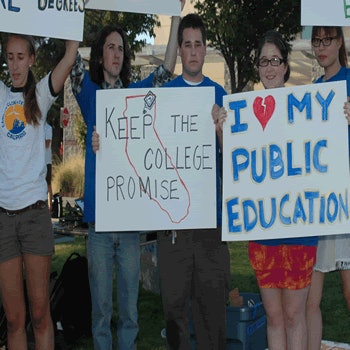When San Francisco announced in February that it would make community college tuition free for all city residents, regardless of their income, it joined a multitude of cities and states that are doing something similar. According to the most recent count from the College Promise Campaign, an initiative tracking these numbers, nearly 200 states and localities have initiated “College Promise” programs.

A panel of three leaders in the college promise movement discussed the forces at work behind the initiation of promise programs and how states and cities are bankrolling these programs at a time when funding for higher education overall is on the decline at the Student Affairs Administrators in Higher Education (NASPA) conference in San Antonio on Monday.
The concept of “free” tuition at the nation’s community colleges gained national attention under President Obama when he proposed a national America’s College Promise program during the 2016 State of the Union address. While a subsequent bill and efforts to develop a national framework did not gain traction, states and localities are moving ahead with programs of their own.
The argument for college promise programs is a straightforward one: by broadening access to postsecondary education for more students, who might otherwise perceive college as out of their reach, colleges will help increase participation in the economy.
“In the 1970s, you could get a great, middle-class job with just a high school diploma,” Dr. Joe May, chancellor of the Dallas County Community College District (DCCCD), said on Monday. “That’s all you needed.”
Today, that is not the case. Often, experts in higher education talk about the importance of advancing educational agendas to meet future workforce needs. The Georgetown University Center on Education and the Workforce estimates that, by 2020, 65 percent of jobs will require a postsecondary degree. Yet that future would appear to already be here in some parts of the country, May said.















